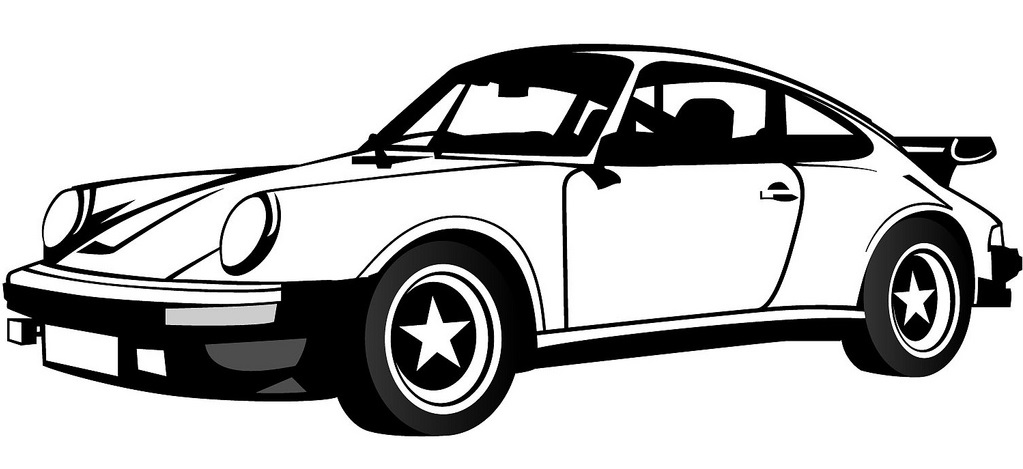A brief history of
Hudson
Introduction
The car manufacturer Hudson has made an important impact on the automotive world. In this article we will give a brief but detailed history of the Hudson marque.
We will look at the origins of Hudson looking at who, why, where and when Hudson was founded. We'll look at the design of the iconic Hudson logo and what are some the more significant Hudson models.
We'll take a glance at what racing history the Hudson has and who some of the most important people have been in the history of Hudson over the years.
Who, where, when and why was
Hudson founded?
Hudson, a historic American automobile manufacturer, was founded in 1909 by Roy D. Chapin and Howard Coffin. The company was established in Detroit, Michigan, which was a thriving hub for the burgeoning automotive industry at the time.
Driven by a vision to create high-quality, affordable cars, Chapin and Coffin named their venture the Hudson Motor Car Company. They believed that there was a market for well-built vehicles that offered exceptional value to consumers.
The founders of Hudson aimed to differentiate themselves in the competitive automobile market by focusing on innovation and engineering excellence. They sought to build cars that combined advanced features, reliability, and style at an affordable price point.
Hudson quickly gained popularity and became known for its innovative designs and cutting-edge technologies. In 1910, just a year after its founding, Hudson introduced its first model, the Hudson Model 20, which featured a six-cylinder engine, a rarity at the time.
As the years went by, Hudson continued to make significant strides in the automotive industry. In 1916, the company introduced the Hudson Super Six, a car that garnered critical acclaim for its advanced engineering and exceptional performance.
One of the pivotal moments in Hudson's history came in the 1920s when the company implemented a revolutionary engineering concept known as the "Step-Down" design. This innovative design featured a lower center of gravity, improved stability, and increased passenger safety.
Hudson's commitment to innovation and engineering excellence continued into the 1930s, with the introduction of the Terraplane, a line of affordable, stylish, and high-performance cars that appealed to a wide range of consumers.
Throughout its existence, Hudson produced a diverse range of models, from practical sedans to powerful performance cars. The brand's commitment to quality and innovation, coupled with its affordability, made it a popular choice among consumers.
Unfortunately, despite its early successes, Hudson faced challenges in the 1950s and eventually merged with Nash-Kelvinator Corporation to form the American Motors Corporation (AMC) in 1954.
Nevertheless, the legacy of Hudson continues to resonate in the automotive industry. The brand's innovative designs, engineering achievements, and commitment to value have left an enduring impact on the history of American automobiles.
How did the
Hudson logo originate?

How did the Hudson logo originate?
The logo of the car manufacturer Hudson has undergone several iterations throughout the company's history. In its early years, Hudson used a logo that featured the word "Hudson" in bold, stylized lettering. This logo conveyed a sense of strength and confidence, reflecting the brand's commitment to quality and innovation.
As the company grew and evolved, so did its logo. In the 1920s, Hudson introduced a new logo that incorporated a triangle-shaped emblem with the letter "H" in the center. This logo was a visual representation of the company's forward-thinking approach and its focus on engineering excellence.
In the 1930s, Hudson introduced another logo variation that featured a streamlined design with a stylized "H" emblem enclosed within an oval shape. This logo reflected the brand's embrace of modernity and captured the sleek and aerodynamic designs of the era.
During the 1940s and 1950s, Hudson further refined its logo, adopting a more minimalist approach. The logo featured a simple, clean design with the name "Hudson" written in a bold, sans-serif font. This logo represented the brand's commitment to simplicity and elegance.
With the merger of Hudson and Nash-Kelvinator to form the American Motors Corporation (AMC), the Hudson logo eventually gave way to the AMC logo, marking the end of the Hudson brand as an independent entity. However, the logo variations of Hudson during its existence exemplified the brand's evolution, embodying the spirit of innovation, strength, and style.
What are some of the significant
Hudson models?
Hudson Motor Car Company, known for its innovative designs and engineering prowess, produced a range of significant models throughout its history. These vehicles showcased the brand's commitment to performance, style, and technological advancements.
In the early years of the company, one of Hudson's notable models was the Hudson Super Six, introduced in 1916. This car featured a powerful inline-six engine, advanced for its time, and became popular for its reliability and smooth performance. The Super Six set the stage for future high-performance models from Hudson.
During the 1930s, Hudson made a significant breakthrough with the introduction of the Terraplane series. These cars were renowned for their aerodynamic designs and impressive speed capabilities. The Terraplane was available in various body styles and offered a range of engines, including the high-performance Eight and Super Eight models.
Continuing its tradition of performance-focused vehicles, Hudson introduced the Hornet series in the 1950s. The Hudson Hornet quickly gained fame in stock car racing, dominating the NASCAR circuit during that era. Its powerful engine, lightweight construction, and superior handling made it a formidable competitor on the track. The success of the Hudson Hornet in racing further elevated the brand's reputation for performance and reliability.
In the 1970s, Hudson launched the Jet series, which included the iconic Hudson Jet. This compact car featured a sleek design and was equipped with a range of engines, including the powerful Jet Fire engine with turbocharging technology. The Jet Fire model was particularly notable for being one of the first production cars to offer turbocharging, a feature that enhanced its performance capabilities.
Hudson's commitment to performance and innovation was exemplified by its range of significant models. From the early Super Six to the legendary Hornet and the innovative Jet series, these vehicles showcased Hudson's engineering excellence and their passion for creating high-performance cars.

One of Hudson's Most Iconic Models
Who are some of the most important people in
Hudson's History
Behind the success and achievements of the Hudson Motor Car Company were several individuals who played significant roles in shaping the brand's legacy. These individuals, with their vision, leadership, and engineering expertise, contributed to the development of iconic Hudson models and the brand's reputation for innovation.
One of the notable figures in Hudson's history is Roy D. Chapin, Sr. As one of the founders of the company, Chapin played a pivotal role in its establishment. He served as the president of Hudson and was instrumental in setting the company's direction and guiding its growth. Chapin's vision for creating reliable and high-performance vehicles laid the foundation for Hudson's success.
Another influential figure in Hudson's history is Howard E. Coffin. Coffin was a co-founder of Hudson and served as the company's vice president and general manager. His expertise in engineering and manufacturing was crucial in developing Hudson's advanced technologies and innovative designs. Coffin's contributions helped establish Hudson as a leader in automotive engineering and propelled the brand's growth.
One of the key engineers at Hudson was J.L. Hudson, who was responsible for the development of the innovative Super Six engine. Hudson's engine designs were known for their efficiency, power, and durability. His engineering expertise played a vital role in the success of Hudson's early models and helped establish the brand's reputation for performance and reliability.
Additionally, Hudson employed talented designers who shaped the brand's distinctive style. Notable among them was Frank Spring, who was responsible for designing the iconic Hudson Hornet. Spring's design prowess and attention to aerodynamics resulted in the Hornet's sleek and streamlined appearance, which contributed to its success both on the road and on the racing circuit.
These individuals, along with numerous engineers, designers, and leaders at Hudson, collectively contributed to the brand's success and the development of its significant models. Their vision, expertise, and passion for innovation shaped the course of Hudson's history and cemented its reputation as a forward-thinking and respected automobile manufacturer.

One of the most influential people in the history of Hudson
Hudson's Racing History
Racing has always been an integral part of Hudson's history, with the brand achieving remarkable success on the track. Hudson's performance-oriented approach and innovative engineering made its cars a force to be reckoned with in various racing competitions.
In the 1950s, Hudson made a significant impact on the racing scene with its iconic model, the Hudson Hornet. The Hornet, known for its powerful engine and exceptional handling, became a dominant force in stock car racing. The Hornet's success was highlighted by its numerous victories, including a remarkable winning streak in the early 1950s. Driven by talented racers such as Marshall Teague and Herb Thomas, the Hudson Hornet showcased its superior performance and proved its capabilities on oval tracks across the United States.
Hudson's success in racing extended beyond stock car competitions. The brand also made its mark in endurance racing, specifically in the grueling Carrera Panamericana. The Carrera Panamericana was a legendary race held in Mexico, known for its challenging terrain and demanding conditions. In 1952, Hudson entered the race with a specially prepared Hornet. The Hudson Hornet demonstrated its durability and performance, securing a remarkable victory in its class.
Hudson's commitment to racing continued into the late 1950s and early 1960s with the introduction of the Hudson Jet. Although the Jet was not as successful as the Hornet on the racing circuit, it still participated in various racing events, showcasing Hudson's dedication to performance-oriented vehicles.
Overall, Hudson's racing history reflects the brand's commitment to performance and innovation. The success of the Hudson Hornet in stock car racing, as well as its victory in the Carrera Panamericana, demonstrated the brand's engineering prowess and the exceptional capabilities of its vehicles. Hudson's involvement in racing not only elevated its reputation as a manufacturer of high-performance cars but also showcased its commitment to pushing the boundaries of automotive engineering.
Summary
Hudson was an American automobile manufacturer that left an indelible mark on the automotive industry. With its innovative designs, powerful engines, and commitment to performance, Hudson quickly became known for producing exceptional vehicles that appealed to enthusiasts and racing enthusiasts alike.
The brand's most notable achievement was the Hudson Hornet, a legendary car that dominated stock car racing in the 1950s. The Hornet's success on the track, with its powerful engine and exceptional handling, solidified Hudson's reputation as a performance-oriented brand. In addition to its triumphs in stock car racing, Hudson also made its mark in endurance racing, notably winning the challenging Carrera Panamericana race.
Throughout its history, Hudson remained dedicated to pushing the boundaries of automotive engineering and producing cars that were not only reliable but also offered superior performance. The brand's commitment to performance and innovation cemented its legacy in the automotive world.
View Hudson Car Specifications
More Manufacturer Histories.

























